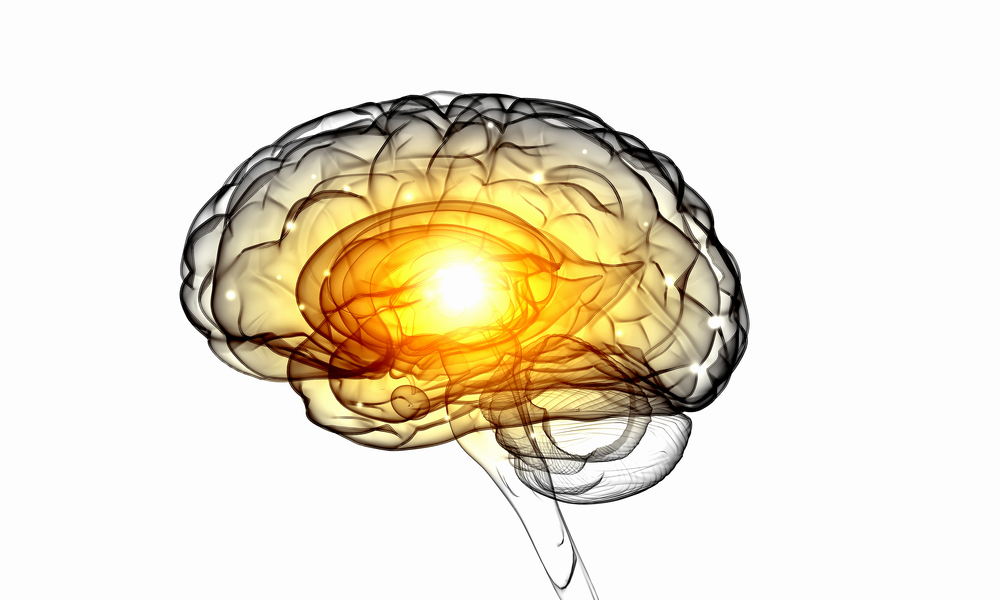Specific Area of Brain Involved in Motor Issues, Slow Thinking in Parkinson’s, Mouse Study Shows

Nerve cell damage in a specific area of the brain impairs motor function and slows thought, both of which are symptoms of Parkinson’s disease, a mouse study finds.
The study, “Loss of glutamate signaling from the thalamus to dorsal striatum impairs motor function and slows the execution of learned behaviors,” was published in NPJ Parkinson’s Disease.
Parkinson’s disease is caused by the progressive loss of brain nerve cells — in particular, those that produce dopamine, a molecule essential for nerve cell communication — as well as the abnormal accumulation of alpha-synuclein-containing Lewy bodies that induce nerve cell damage.
While a hallmark of Parkinson’s disease is the loss of dopamine-producing nerve cells in a brain area called the substantia nigra, known to be involved in motor function, increasing evidence shows that other areas of the brain are also impacted both at Parkinson’s onset and throughout the course of the disease.
Nerve cells in the substantia nigra send dopamine signals to the dorsal striatum, a region of the brain also involved in the control of movement. The loss of dopamine signaling in Parkinson’s disease leads to dorsal striatum dysfunction and to the motor problems seen in Parkinson’s patients.
However, the dorsal striatum also receives signals from other areas of the brain, such as the thalamus, which relays motor signals to the dorsal striatum through glutamate, another signaling molecule. The thalamus is also known to play a crucial role in memory, executive function, and attention.
Join our forums and be part of the Parkinson’s Disease News Today Community!
Several studies have reported that Parkinson’s patients present with Lewy bodies, loss of nerve cells, and changes in the structure and activity of the thalamus.
These data suggest that nerve cell damage in the thalamus may be involved in the development of Parkinson’s symptoms.
Researchers have now evaluated whether the disruption of glutamate-dependent thalamus signaling to the dorsal striatum results in the cognitive and motor deficits characteristic of Parkinson’s.
The team generated genetically modified mice that allowed the induction of loss of glutamate signaling specifically between the thalamus and the dorsal striatum. A battery of motor and behavioral tests were performed in these mice to assess motor function, visuospatial function, executive function, attention, and working memory.
Modified mice showed significant motor coordination deficits, compared with healthy mice, suggesting that impaired thalamus-dorsal striatum signaling is involved in motor deficits.
In addition, while the disruption of thalamus-dorsal striatum signaling did not result in an apparent cognitive impairment, these mice took longer to process cues and new environments and were slower at carrying out tasks than healthy mice.
These results suggest that the loss of glutamate signaling between the thalamus and dorsal striatum led to slower processing reaction times, which resemble “bradyphrenia, the slowness of thought that is often seen in patients with PD and other neurological disorders,” the researchers wrote.
Slow thought can cause bradykinesia — slowness of movements or difficulty moving the body quickly on demand — which is also a symptom of Parkinson’s.
The team noted that the results highlight the involvement of glutamate-producing nerve cells in the thalamus that signal to the dorsal striatum in behaviors of mice that resemble slowness of thought and movement, indicating that the loss of function of these cells contribute to cognitive and motor deficits in Parkinson’s disease.
This may explain why some of the Parkinson’s therapies that target dopamine signaling have limited therapeutic effects in terms of patients’ cognitive function.
The researchers added that new therapies acting on other communication molecules besides dopamine are needed to target cognitive symptoms, and that their genetically modified mice may serve as a model to test those approaches.






